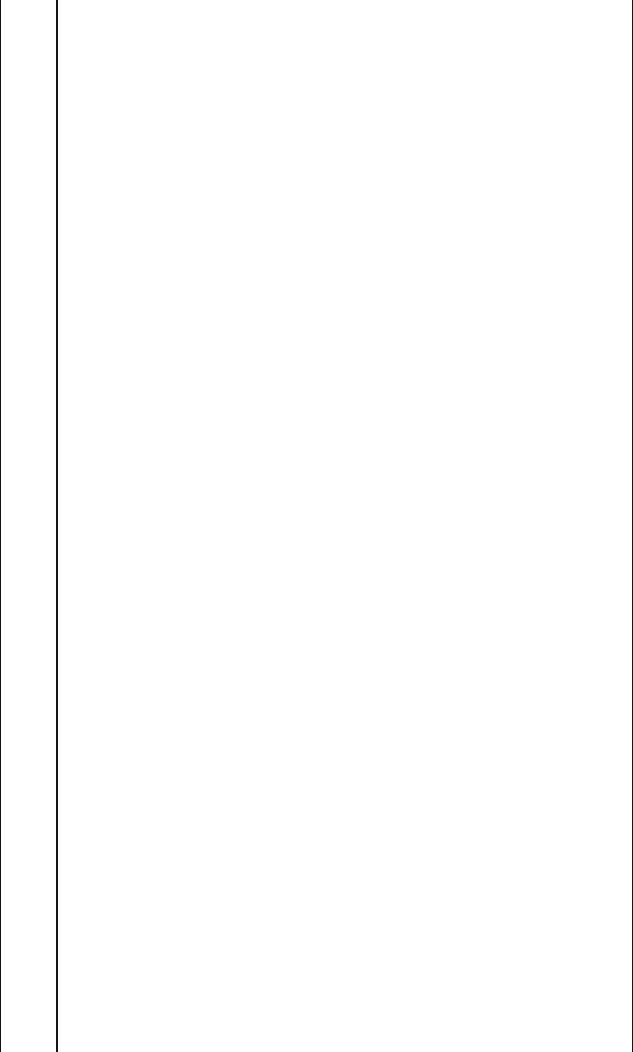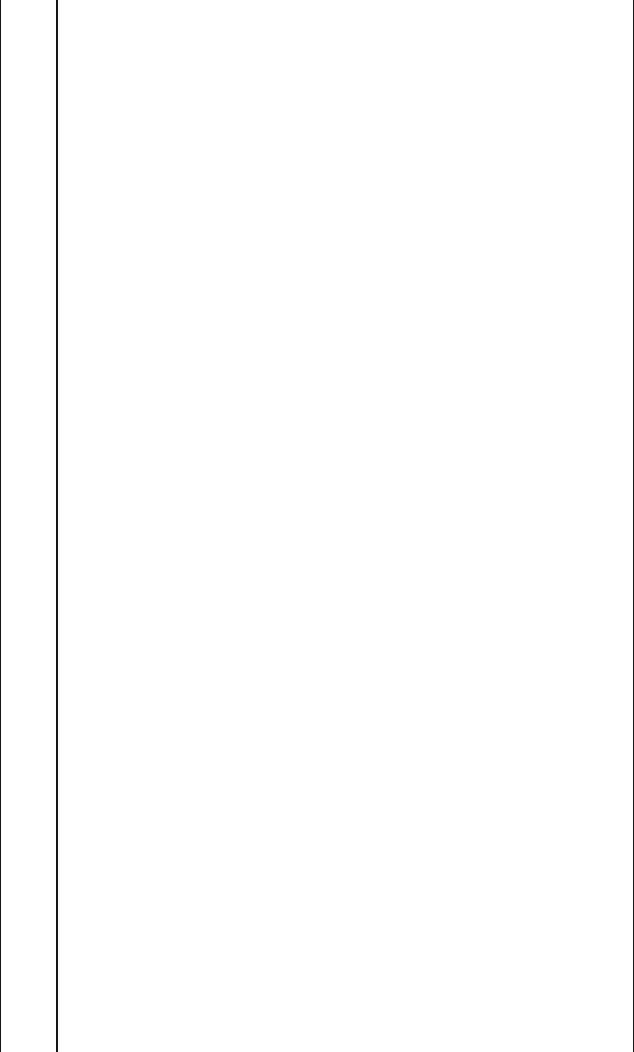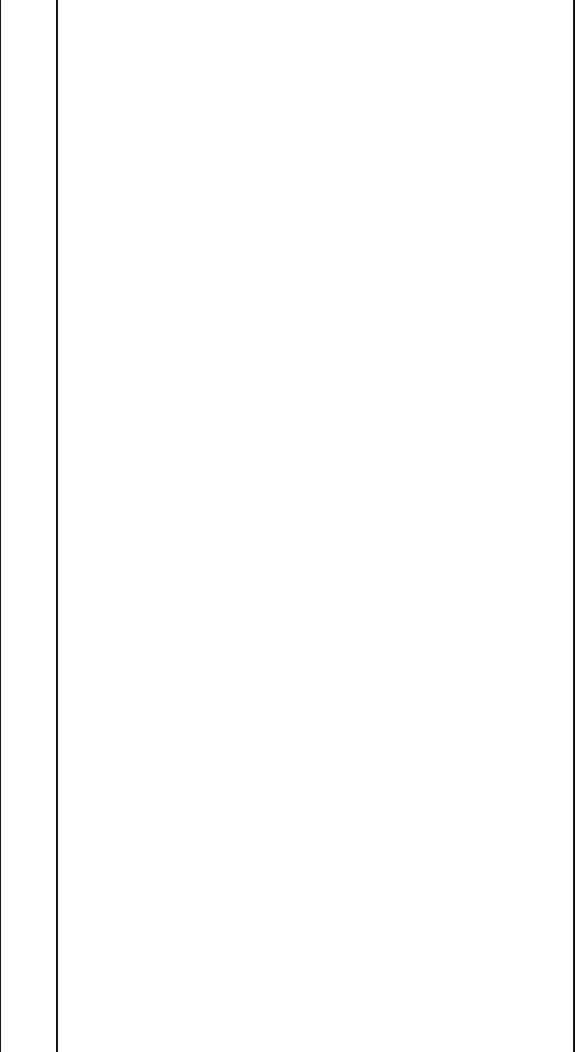Ghodssi R., Lin P., MEMS Materials and Processes Handbook
Подождите немного. Документ загружается.

484 D.W. Burns
negligence occurs or proper precautions are not taken. Training needs to cover topics
of equipment operation, etchant preparation, etchant disposal, wafer handling, etch
steps, rinsing and drying steps, and clean-up procedures. Aspects of safety including
location of eye washes, chemical showers, emergency exits, spill carts, PA system,
phones, and postings of emergency numbers and contact information should also be
presented to the prospective user.
8.4 IC-Compatible Materials and Wet Etching
IC-compatible materials include those materials that are used in standard sequences
for integrated circuit processing. Historically, MEMS devices have been developed
largely on previous-generation equipment from semiconductor facilities, which gra-
ciously gifted many academic institutions with their fully or partially depreciated
equipment as new-generation equipment for larger wafers and smaller feature sizes
emerged. A significant portion of the donated equipment was used to set up bipolar,
p-channel, n-channel, and CMOS processes on 4 in. (100 mm) wafers at the univer-
sity laboratories to fulfill the educational and research needs of circuit-design and
process-engineering students. The laboratories’ pilot lines were set up with adher-
ence to cleanliness principles, particulate control, and avoidance of contaminants
that reduce carrier lifetime, breakdown voltage, and threshold voltage stability of
bipolar and MOS circuits. For good reason, the beliefs that cross-contamination
from sources of metal s uch as sodium can harm the performance of integrated cir-
cuits and cause shifts over time have prevailed. Consequently, wet etchants that
are considered to be electronic grade have sufficiently low values of sodium, trace
concentration of metals such as lead, iron, copper, and nickel, and dopants such as
phosphorus and arsenic [40].
As such, the following sections on etching processes break down materials of
interest into IC-compatible materials (referred to as standard materials) and non-
standard materials, separating out metals from the dielectrics and semiconductors.
8.4.1 Oxide and Dielectric Etching
One or more etch sequences of silicon dioxide occur in nearly every MEMS or
IC process. Etching of oxide generally uses dry-etch sequences for fine-line semi-
conductor processes, however, MEMS processes often use wet oxide etches for
stripping, etching largely noncritical features, opening contacts, and for extensive
lateral etching to remove sacrificial layers.
Silicon dioxide, commonly referred to simply as oxide, etches well at room tem-
perature with hydrofluoric acid (HF) mixed with water. The hydrofluoric acid reacts
with the oxide to form water-soluble H
2
SiF
6
and water [41]. A buffering agent
such as ammonium fluoride may be included to regulate the ionic concentration
of HF
2
–
in the etchant and provide uniform etch rates over long periods of use [42].
8 MEMS Wet-Etch Processes and Procedures 485
Ammonium fluoride-based etches with acetic acid and ethylene glycol are used
for etching oxide passivation layers deposited over pad metals such as aluminum
because of reduced attack on the aluminum [43]. Oxide etch rates vary significantly
with etchant concentration. Although room-temperature etch baths are prominent,
temperature-controlled baths lead to more consistent etch rates and may be desirable
for critical timed etches. Stirring has a minor affect on HF-based etchants, although
stirring and agitation can change the effective etch rate of pad etchants for passi-
vation oxides. Deionized water is used for rinsing, with five bath changes generally
sufficient to quench the etch and to rinse the etchant from the wafer surfaces. The pH
and resistivity of the rinse water may be checked or monitored to ensure adequate
rinsing time and rates. Drying is typically done with a commercial spin-rinse dryer
that includes high-speed axial spinning with heated nitrogen after spray rinsing.
Small features in a dark-field photoresist mask may be difficult to etch consis-
tently with HF-based etchants due to vapor barriers from small pockets of trapped
air in the patterned region or etch-resistant silicate formation on the oxide surface,
although the etched film can be cleared consistently with an ammonium fluoride
etchant. The oxide etch rate depends strongly on the oxide deposition process.
Thermally grown oxides on silicon etch the most slowly, whereas less dense, unan-
nealed deposited oxides etch much more quickly. Large amounts of impurities such
as boron or phosphorus in the film increase the etch rate, and can be attractive for
rapid undercutting of freestanding microstructures. For smaller amounts of boron
(<17 molar%), the etch rate of oxide decreases [27]. Oxide damage from ion implan-
tation can also increase the etch rate. Conversely, high temperature annealing can
densify deposited films and decrease the etch rate of the densified films to nearly
that of thermally grown oxide.
Large amounts of oxide can be etched in HF or buffered HF etchants, and these
etchants have a relatively long shelf life in storage or in use. Glass, Pyrex
R
glass-
ware, and quartz will etch in HF, therefore their use as etch beakers and wafer
holders is limited, whereas beakers and holders of acid-resistant materials such
as polypropylene (PP), high-density polyethylene (HDPE), polytetrafluoroethy-
lene (PTFE or Teflon), and polyvinylidene fluoride (PVDF) [27] are prominent.
Photoresist generally forms an excellent mask except for long exposure to high con-
centrations of unbuffered hydrofluoric acid, and polysilicon or occasionally silicon
nitride layers may be used to mask an oxide etch. A dedicated chemical hood may
include, for example, an etch tank for buffered HF etch, another etch tank for con-
centrated HF (49%), and provision for photoresist stripping. A summary of aspects
and considerations for wet etching of silicon dioxide is found in Table 8.4.
Etch rates for typical silicon dioxide etchants are found in Table 8.5.Theterm
buffered hydrofluoric acid (BHF) is used throughout this chapter to denote etchants
with mixtures of hydrofluoric acid, ammonium fluoride, and water, rather than the
commonly used term buffered oxide etch (BOE) inasmuch as BHF is used for etch-
ing materials other than oxide. Diluted HF etchants, or DHF, are generally followed
by the portion of concentrated HF to the portion of water by volume.

486 D.W. Burns
Table 8.4 Oxide wet-etch sensitivities
Varia ble
Effect on etch
rate Etchant Remarks
1 Etchant con-
centration
High HF-, BHF-, or
NH
4
F-based
Higher acid concentration
increases the etch rate; increased
dilution in water decreases the
etch rate
2 Buffering Moderate BHF NH
4
F used as a buffering agent for
HF-based etchants for a uniform
etch rate
3 Temperature Moderate HF, BHF, NH
4
F Increased etchant temperature
increases the etch rate
4 Stirring or
agitation
None to
moderate
HF, BHF, NH
4
F Stirring has little impact on HF
etch rates (though may help with
small patterned features);
stirring or agitation increase the
etch rate for NH
4
F-based
etchants
5 Rinse liquid None HF, BHF, NH
4
F Use copious amounts of DI water;
spray, dump, cascade, overflow,
or dilution rinse
6 Drying None HF, BHF, NH
4
F Use spin-rinse-dry or N
2
blow dry
7 Feature size None to
moderate
HF, BHF, NH
4
F Small features can be difficult to
etch with HF-based etchants due
to salt formation on the surface
or vapor locks with photoresist
masks; improves with
NH
4
F-based etchants
8 Deposition
technique
for oxide
High HF, BHF, NH
4
F Thermally grown oxide normally
etches the slowest; deposited
oxides generally etch faster with
lower deposition temperature,
less annealing and decreased
film density
9 Doping level
in oxide
Moderate HF, BHF, NH
4
F Doped oxide, for example, with
boron or phosphorus or both,
will generally etch faster
10 Annealing Low to
moderate
HF, BHF, NH
4
F Annealing can slow etch rates of
LTO and other deposited oxides;
minimal affect on etch rate of
thermal oxide
11 Etch
exhaustion
Low HF, BHF, NH
4
F HF and BHF etchants show little
etch exhaustion
12 Shelf life Moderate to
long
HF, BHF, NH
4
F HF and BHF etchants can last for
months
13 Etch beakers
and holders
None HF, BHF, NH
4
F Avoid use of quartz, Pyrex, glass,
or metal beakers and holders
14 Etch masks None HF, BHF, NH
4
F Photoresist is often used;
polysilicon or silicon nitride
layers can be effective

8 MEMS Wet-Etch Processes and Procedures 487
Table 8.5 Silicon dioxide etchants and etch processes
Material
Etch rate
(Å/s) Etchant Remarks and references
1 Silicon dioxide
(SiO
2
), deposited
BPSG
Not specified HCl(38%): HF(49%): H
2
O
10:1:10
Room temperature; BPSG etchant; reduced attack on thermal oxides;
DI water rinse [45]
2 Silicon dioxide
(SiO
2
), thermally
grown
11 HF(49%)
vapor
20
◦
C vapor, vapor HF etchant; atmospheric pressure; 1 cm over dish
of etchant; mask with Si(poly), Si
3
N
4
(65:1), Si
3
N
4
(low-stress)
(35:1); PR masks may peel;
Etches Pyrex, quartz, SiO
2
(LTO) (13 Å/s), SiO
2
(PSG) (35 Å/s),
SiO
2
(PSG, annealed) (25 Å/s);
Doesn’t significantly etch Au, Cr, Ni, polyimide, Pt, sapphire, Si,
Si(poly), W; roughens Al, Cu, Ti; avoid condensation on wafer by
removing the wafer from the vapor at 15-sintervals; heat wafer for
higher etch rate and higher selectivity to thermal oxide over
deposited oxide [27, 28, 46]
3 Silicon dioxide
(SiO
2
), LPCVD
LTO and PSG
13–35 HF(49%)
vapor
20
◦
C vapor; vapor HF etchant; atmospheric pressure; low end of range
for undoped, annealed films; high end of range for doped,
unannealed films; see remarks for thermal oxide with same etchant
[27]
4 Silicon dioxide
(SiO
2
), thermally
grown
220 HF(49%)
undiluted
Room temperature; HF etchant (49 wt%); DI water rinse [47, 48]
5 Silicon dioxide
(SiO
2
), deposited
PSG
1100–1900 HF(49%)
undiluted
Room temperature; PSG etchant; annealed SiO
2
(PSG), 3–5 wt%; DI
water rinse [47]
6 Silicon dioxide
(SiO
2
), thermally
grown
380 HF(49%)
undiluted
20
◦
C; HF etchant (49 wt%); PR mask OK for short etches; PR will
peel or crack for ratios stronger than 3:1 H
2
O:HF(49%) [49]; mask
with >4000 Å Si(poly) [50], Si
3
N
4
(160:1), Si
3
N
4
(low-stress)
(440:1), W (460:1);
Etches Al, Ti; DI water rinse [27]

488 D.W. Burns
Table 8.5 (continued)
Material
Etch rate
(Å/s) Etchant Remarks and references
7 Silicon dioxide
(SiO
2
), deposited
230–600 HF(49%)
undiluted
20
◦
C; HF etchant (49 wt%); low end of range for undoped, annealed
films; high end of range for doped, unannealed films; see remarks
for thermal oxide with same etchant [27]
8 Silicon dioxide
(SiO
2
), thermally
grown
4 HF(49%):H
2
O
1:10
20
◦
C; DHF etchant (10:1); mask with PR, Si(poly), Si
3
N
4
(20:1),
Si
3
N
4
(low-stress) (75:1), W (>200:1);
Etches AlSi (2%) (40 Å/s), Ti (180 Å/s), TiW (1 Å/s); DI water rinse
[27]
9 Silicon dioxide
(SiO
2
), deposited
5–250 HF(49%):H
2
O
1:10
20
◦
C; DHF etchant (10:1); low end of range for undoped, annealed
films; high end of range for doped, unannealed films; see remarks
for thermal oxide with same etchant [27]
10 Silicon dioxide
(SiO
2
), thermally
grown
1 HF(49%):H
2
O
1:50
Room temperature; DHF etchant (50:1); mask with PR, Si(poly),
Si
3
N
4
(>5:1), Si
3
N
4
(low-stress) (>5:1); DI water rinse [51]
11 Silicon dioxide
(SiO
2
), deposited
1–10 HF(49%):H
2
O
1:50
Room temperature; DHF etchant (50:1); low end of range for
undoped, annealed films; high end of range for doped, unannealed
films; see remarks for thermal oxide with same etchant [51]
12 Silicon dioxide
(SiO
2
), thermally
grown
0.4 HF(49%):H
2
O
1:100
Room temperature; DHF etchant (100:1); DI water rinse [52]
13 Silicon dioxide
(SiO
2
), BSG
5 HF(49%): HNO
3
(70%):
H
2
O
1:100:100
Room temperature; R-etchant; BSG etchant; preferential to
boron-doped glass; etches thermal SiO
2
at 1 Å/s; DI water rinse [8]
14 Silicon dioxide
(SiO
2
), PSG
550 HF(49%): HNO
3
(70%):
H
2
O
3:2:100
Room temperature; P-etchant; PSG etchant; preferential to
phosphorus-doped glass; etches thermal SiO
2
at 2 Å/s; DI water
rinse [8]
15 Silicon dioxide
(SiO
2
)
HF(49%): HNO
3
(70%):
Acetic
1:3:2
Room temperature; HNA etchant; DI water rinse [53]

8 MEMS Wet-Etch Processes and Procedures 489
Table 8.5 (continued)
Material
Etch rate
(Å/s) Etchant Remarks and references
16 Silicon dioxide
(SiO
2
), thermally
grown
17 HF(49%): NH
4
F (40%)
1:5
20
◦
C; BHF etchant (5:1); mask with PR, Si(poly) (>100:1), Si
3
N
4
(110:1), Si
3
N
4
(low-stress) (250:1), W (>50:1);
Etches Ag (1 Å/s), Al (2 Å/s), AlSi (2%) (23 Å/s), Al
2
O
3
(27 Å/s), Cu
(1 Å/s), graphite (3 Å/s), polyimide (1 Å/s), Pyrex (7 Å/s), quartz
(22 Å/s), Si
3
N
4
(PECVD) (1.5–10 Å/s), SiO
2
(LTO) (20–25 Å/s),
SiO
2
(PECVD) (40–80 Å/s), SiO
2
(PSG) (75–110 Å/s), Ti (fast),
TiW (17 Å/s);
Etches slightly Cr (0.1 Å/s), Ge(poly) (0.3 Å/s), Mo (0.1 Å/s), Ni
(0.2 Å/s), NiCr (80/20) (0.2 Å/s), Parylene Type C (0.1 Å/s),
Si(poly) (0.1 Å/s), SiGe(poly) (0.1 Å/s), TiN (0.4 Å/s), TiW(10/90)
(0.1 Å/s), Va (0.3 Å/s), W (0.3 Å/s);
Doesn’t significantly etch Au, Nb, Pd, Pt, sapphire, Si, Ta; use TiN or
TiW rather than Ti for adhesion layers; DI water rinse [27, 28]
17 Silicon dioxide
(SiO
2
), TEOS
10–80 HF(49%): NH
4
F (40%)
1:7
30
◦
C; BHF etchant (7:1) with FC-170 surfactant (1 part per 1600);
etch rate decreases with annealing and dopant; DI water rinse [54]
18 Silicon dioxide
(SiO
2
), deposited
20–110 HF(49%): NH
4
F (40%)
1:5
20
◦
C; BHF etchant (5:1); low end of range for undoped, annealed
films; high end of range for doped, unannealed films; see remarks
for thermal oxide with same etchant [27]
19 Silicon dioxide
(SiO
2
), thermally
grown
15 HF(49%): NH
4
F (40%)
1:6
Room temperature; BHF etchant (6:1); mask with PR, Si(poly), Si
3
N
4
(>90:1), Si
3
N
4
(low-stress) (>90:1); DI water rinse [51]
20 Silicon dioxide
(SiO
2
), deposited
25–100 HF(49%): NH
4
F (40%)
1:6
Room temperature; BHF etchant (6:1); low end of range for undoped,
annealed films; high end of range for doped unannealed films; see
remarks for thermal oxide with same etchant [51]
21 Silicon dioxide
(SiO
2
), deposited
on Al
NH
4
F (40%): Acetic
1:1
Room temperature; reduced attack on aluminum; DI water rinse [45]

490 D.W. Burns
Table 8.5 (continued)
Material
Etch rate
(Å/s) Etchant Remarks and references
22 Silicon dioxide
(SiO
2
), deposited
on Al
6NH
4
F
(40%):Acetic:propylene
glycol:H
2
Oplus
surfactant
13:32:6:49
20
◦
C; Pad Etch 4 from Ashland; rate is for SiO
2
(LTO, unannealed);
mask with PR, Si
3
N
4
(90:1), Si
3
N
4
(low-stress) (>100:1), Si
3
N
4
(PECVD) (25:1);
EtchesPyrex(3Å/s),quartz(5Å/s),SiO
2
(5 Å/s), SiO
2
(PECVD,
unannealed) (25 Å/s), SiO
2
(PSG, unannealed) (35 Å/s);
Slightly etches Al (0.3 Å/s), AlSi (2%) (2.5 Å/s), Ti (0.3 Å/s);
Doesn’t significantly etch Cr, Mo, Nb, sapphire, Si, Si(poly), Ta, Va,
or W; DI water rinse [28]
23 Silicon dioxide
(SiO
2
), thermally
grown
13 Ammonium fluoride buffer,
hydrofluoric acid
20
◦
C; Transene Buffer HF Improved; PR masks; faster with deposited
and doped oxides; DI water rinse [55]
24 Silicon dioxide
(SiO
2
), deposited
on Al
67 Ammonium fluoride,
glacial acetic acid, Al
etch inhibitor, surfactant
22
◦
C; Transene Silox Vapox III; mask with PR; minimal Al attack; DI
water rinse [55]
8 MEMS Wet-Etch Processes and Procedures 491
The etch rate tables throughout this chapter emphasize recipes mixed from
standard integrated circuit laboratory chemicals, although many other fine etchant
recipes exist. The etch tables are separated into dielectrics then metals, first for
materials compatible with clean IC processing and later for nonstandard materi-
als of interest to the MEMS community. The etched material name is generally
followed by its chemical symbol in parentheses for ease in searching. The partic-
ular deposition technique may also be indicated. Within each table, the etchants
and etch processes are organized alphabetically first by etched material, then by
etchant components, and then by etch rate for similar etchants (e.g., with different
temperatures or citations). Within each etch mixture, the chemical components are
generally organized alphabetically, with hydrogen peroxide, diluents such as acetic
acid, and water positioned last in the component sequence. The chemical concentra-
tion in weight percent is generally listed in parentheses after the chemical symbol,
except for those with 100% concentrations and solid forms. Acetic acid (>99%) is
denoted simply as acetic. Organic solvents and etchants are generally denoted with
an acronym such as IPA for isopropyl alcohol, EtOH for ethyl alcohol, MeOH for
methyl alcohol, and KOH for potassium hydroxide. Semiconductor or reagent grade
chemicals are available from a number of fine suppliers [44].
The composition ratios for chemical mixtures follow the etchant components,
with numbers separated by colons to indicate the relative volumes (not weight)
of each component unless otherwise indicated. The sequence of the etchant com-
ponents does not imply the order in which the components should be added. For
example, it is not to be inferred that water is added last (remember to add acids to
water, not the other way around). Commercial etchants of particular interest with
published etch rates are included, although the components of the etchant may not
be fully known.
The etch rates are presented uniformly in angstroms per second (Å/s), in part to
keep the etch rates of interest in the single-digit range and above. Etch rates of 1–
10 Å/s are generally suitable for film thicknesses up to several thousand angstroms;
etch rates of 100–1000 Å/s or more are generally suitable for extensive lateral etch-
ing or removal of significant portions of the substrate such as a backside anisotropic
etch. Etch rates less than 1 Å/s are generally too s low for common use, although the
information is valuable to determine the selectivity of the etchant to masking layers
and other exposed layers during the etch sequence or to layers that become exposed
during the overetch portion of the etch step. Notes of interest and references are
included for each etchant, including etch rates and selectivities to other materials
when available. The recipes are believed to be accurate, although many have not
been used or confirmed by the author. Some etch rates have been rounded slightly
from the literature values, and some etchant components have been tweaked to align
them with commercial concentrations for standard electronics-grade reagents. The
recipes and etch rates are intended to serve as a guide to wet chemical etching for a
wide variety of MEMS-related materials, and a selected etchant should be verified
by the user with samples under representative etching conditions prior to actual use.
Wet etching of other dielectric films such as silicon nitride have characteris-
tics and concerns similar to those of oxide etching. Silicon nitride films, being
492 D.W. Burns
much harder and more chemically resistant than silicon dioxide, are best etched
using plasma or reactive ion etching because the etch rates in liquid etchants are
slow and the choice of suitable masking materials is limited. Etchants for silicon
nitride include the family of etchants for silicon dioxide (although much slower),
and phosphoric-acid based etchants with high selectivity to oxide. Phosphoric acid
is generally heated to obtain reasonable etch rates. Overall etch times for silicon
nitride are similar to those of oxide, because the thickness of silicon nitride films
for IC or MEMS devices is often less than the oxide thickness. The deposition tech-
nique has a direct impact on the etch rates of silicon nitride, similar to its impact on
oxide. Stoichiometric LPCVD silicon nitride films and stress-compensated silicon
nitride films with higher silicon fractions are more resistant to etchants than the more
porous PECVD or sputtered films. Etch tanks and carriers for room-temperature
HF-based etches can use polypropylene, PFA or PTFE carriers and beakers. Heated
phosphoric-acid based etches may use PFA, Pyrex, or quartz beakers and holders.
Standard photoresist processes can provide a suitable mask for dry etching and some
HF-based etching of silicon nitride, although the resist is generally not suitable for
elevated-temperature phosphoric acid etching or for high HF concentrations. A pre-
treatment including a brief oxide etch may improve nitride etch-rate uniformity.
Etch rates for silicon nitride are compiled in Table 8.6.
8.4.2 Silicon, Polysilicon, and Germanium Isotropic Etching
With single-crystal silicon wafers comprising the vast majority of substrates used for
IC and MEMS processing, silicon etching has many well-established, diverse pro-
cesses for removing silicon in preferential shapes and locations. Anisotropic silicon
etching, a long-term standard for backside cavity and silicon diaphragm formation,
has given way to vertical wall etching with deep reactive ion etching for many
applications. Frontside features such as trenches and channels with aspect ratios
(etch depth to etch width) greater than 1:1 are generally dry etched. Traditional
mesa processes with liquid silicon etches have been upgraded to plasma process-
ing. High removal rates with plasma torches are available for noncontact wafer
thinning with argon and CF
4
at 20 µm/min [59]. Etch stop mechanisms based on
electrochemistry or high boron-doped silicon have been superseded by embedded
oxide etch stops with bonded wafer technology and by other methods for silicon-on-
insulator formation that provide dry-etch alternatives to wet etching of silicon. The
bulk thinning of wafers for flip-chip packages and chip-scale packaging remains
predominantly a wet-etch process through a combination of mechanical grinding
and chemical etching. Anisotropic silicon etchants that contain sodium or potas-
sium present contamination concerns to semiconductor processes because of the
potential for threshold voltage drift in MOSFETs; thus, they are considered non-
standard. Anisotropic silicon etching and silicon etch stops are discussed later in this
chapter.

8 MEMS Wet-Etch Processes and Procedures 493
Table 8.6 Silicon nitride etchants and etch processes
Material
Etch rate
(Å/s) Etchant Remarks and References
1 Silicon nitride
(Si
3
N
4
), LPCVD
stochiometric
0.75 H
3
PO
4
(85%) 160
◦
C; strip or mask with Si(poly), SiO
2
(LTO) (>20:1), SiO
2
(PSG)
(2:1);
Etches Al (85 Å/s), AlSi (2%) (160 Å/s), Al
2
O
3
(1 Å/s), C r (17 Å/s),
PR (>20 Å/s), Si
3
N
4
(PECVD) (3 Å/s);
Etches slightly Ge(poly) (<0.1 Å/s), Parylene Type C (0.1 Å/s), Pyrex
(0.6 Å/s), quartz (<0.1 Å/s), sapphire (<0.01 Å/s), Si (<0.1 Å/s),
Si(poly) (<0.1 Å/s), SiGe(poly) (<0.1 Å/s), SiO
2
-thermal
(<0.1 Å/s), TiW (0.4 Å/s);
Doesn’t significantly etch Au, Nb, Ta; heated bath with reflux; PFA
tank; DI water rinse [27, 28]
2 Silicon nitride
(Si
3
N
4
), LPCVD
low stress
0.45 H
3
PO
4
(85%) 160
◦
C; strip or mask with Si(poly), SiO
2
(LTO) (>13:1); SiO
2
(PSG)
(1:1); see remarks for stochiometric Si
3
N
4
with same etchant [27]
3 Silicon nitride
(Si
3
N
4
), CVD
0.4–3 H
3
PO
4
(85%) 140–200
◦
C; etch rate 1.6 Å/s at 180
◦
C; mask with SiO
2
(CVD) (>4:1);
Etches Si (0.05 Å/s) at 180
◦
C; use reflux system to reconstitute water
vapor; DI water rinse [25]
4 Silicon nitride
(Si
3
N
4
), PECVD
high index
3.3 H
3
PO
4
(85%) 160
◦
C; strip or mask with Si(poly), SiO
2
(LTO) (95:1); SiO
2
(PSG)
(7:1); see remarks for stochiometric Si
3
N
4
with same etchant [28]
5 Silicon nitride
(Si
3
N
4
), LPCVD
stochiometric
2.3 HF(49%)
undiluted
20
◦
C; HF etchant (49 wt%); mask with Si(poly) or PR for short times;
etches SiO
2
(>300 Å/s), W (1 Å/s); DI water rinse [27]
6 Silicon nitride
(Si
3
N
4
), LPCVD
low stress
1 HF(49%)
undiluted
20
◦
C; HF etchant (49 wt%); mask with Si(poly) or PR for short times;
etches SiO
2
(>300 Å/s), W (1 Å/s); DI water rinse [27]
